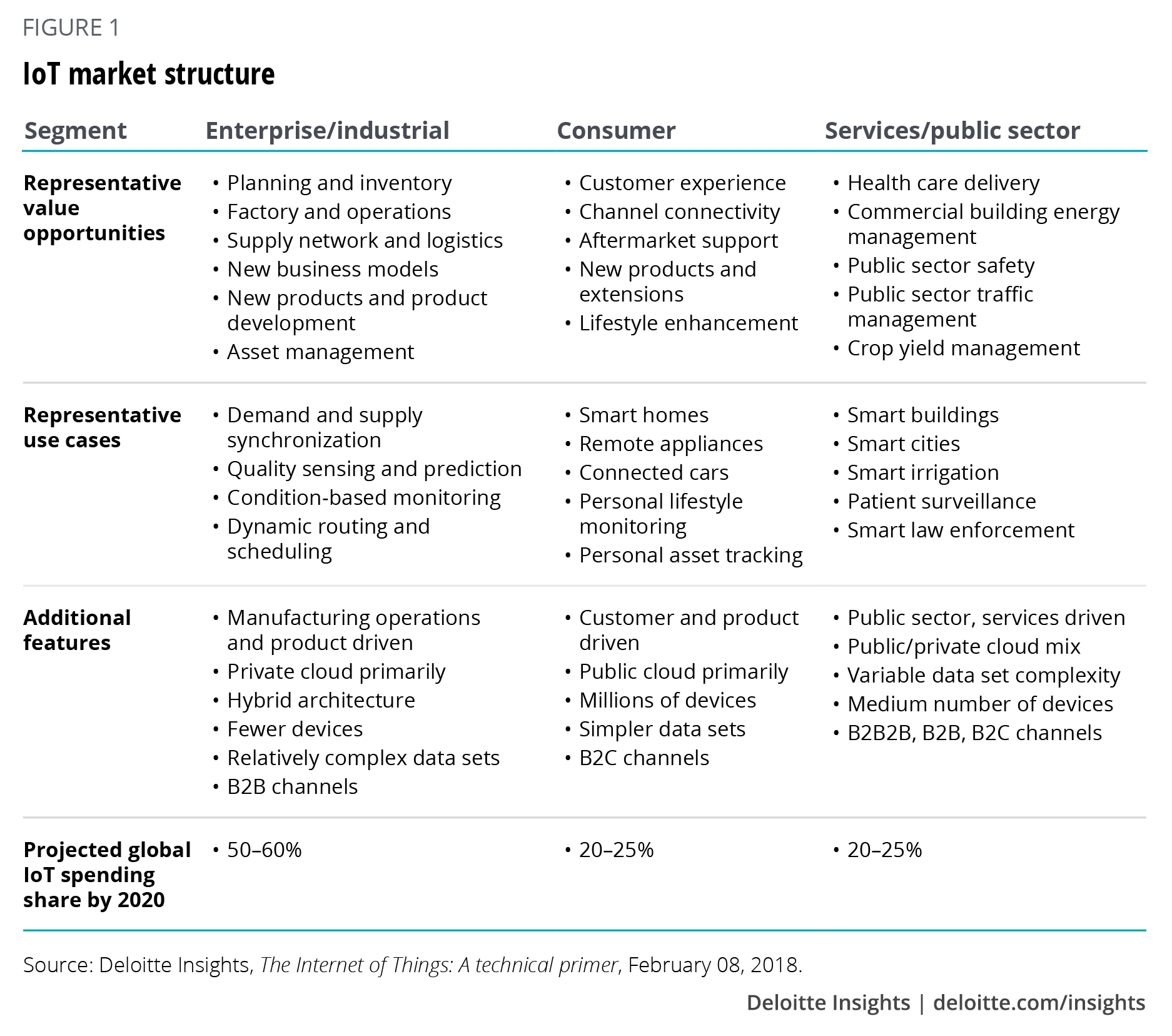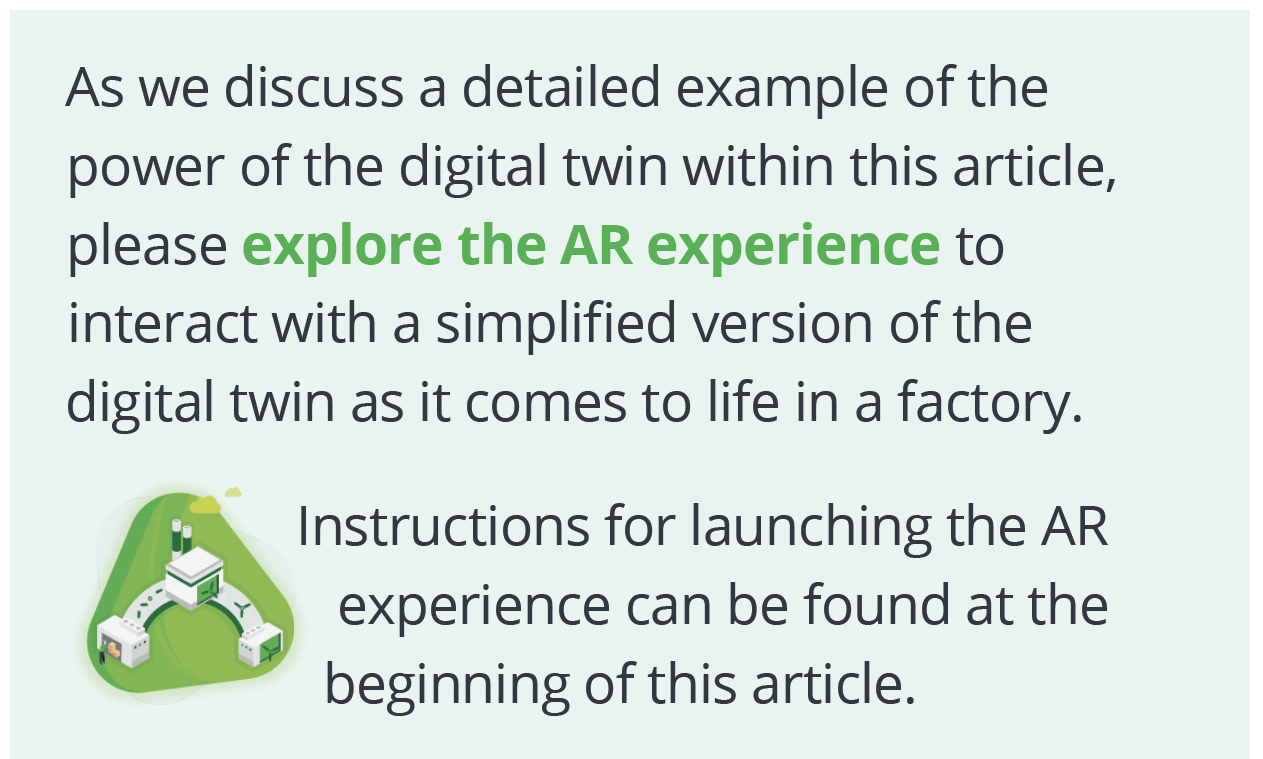
When the Internet of Things meets the digital supply network How connected systems make supply networks smarter
8 minute read
08 April 2019
Technology has transformed supply chains into networks of dynamic processes and systems called digital supply networks, or DSNs. Underpinning a DSN is another technology, which can help companies create new opportunities: the Industrial Internet of Things.

Breaking the chains
Technological shifts have had profound implications on the way most supply chains function. In the past 50 years, organizations have gone from thinking about a sequential, linear series of steps—design, plan, source, make, deliver—to networks of dynamic, interconnected processes and systems. Now, information from many different sources and locations often drives the physical act of production and distribution. We call these systems digital supply networks (DSNs).1
Learn More
Explore the Industry 4.0 collection
Explore the Internet of Things collection
Subscribe to receive updates on Industry 4.0
DSNs harness a broad scope of physical and digital technologies such as robotics, additive manufacturing, augmented reality, analytics, artificial intelligence, cognitive technologies, and the Internet of Things (IoT) to create digital enterprises that are both interconnected and capable of more informed decision-making.2
It is the IoT, however, that truly powers the process—connecting devices, assets, systems, and locations to generate all kinds of information, enabling real- or near-real-time data analysis and “smart” decision-making and informed actions in the physical world. Indeed, the IoT connects the network and provides communication and visibility across the value chain, from inputs to production, from products to customers themselves. Put simply, the IoT is one of the most fundamental technologies that can power the DSN. Let’s explore how.
IoT seems to be disrupting everything
The IoT generates a broad array of value within the context of the DSN. To make sense of it all, it can be useful to divide the market into three basic segments: consumer, services/public sector, and industrial/enterprise. Each exists within the context of a broader ecosystem that can sense and measure across the value chain of organizations, people, and infrastructure.
Consumer IoT (CIoT) describes the millions of connected customer devices that can sense and measure: smartphones, smart watches, smart cars, smart appliances, talking virtual assistants, personal fitness and lifestyle tracking and monitoring devices, among others. CIoT includes applications that enable organizations to better understand how products are being used, and leverage data to more effectively serve their customers, maintain their products, inform product improvements and updates, and uncover innovative product ideas.3 Beyond that, the data created by these devices also creates opportunities for cross-sell and up-sell.4
Services/public sector IoT focuses on delivering infrastructure-related services: smart cities, public transportation, public safety, law enforcement, smart buildings/energy management, smart agriculture, and health care services.
While both are visibly reshaping many of our day-to-day experiences, many of the most revolutionary IoT applications are currently focused on the third category: the Industrial Internet of Things (IIoT).
Also known in some circles as Industry 4.0 or enterprise IoT, IIoT may lead to some of the most significant impacts for organizations across industries and sectors: reducing cost of production, improving processes, driving better-informed decisions, and leading to operational efficiencies—in short, potentially informing and reshaping how businesses run both their operations and their DSNs. Ultimately, an IIoT approach can evolve into one that is repeatable and scalable across the organization, and across however many DSNs it operates.
Each of the IoT segments is marked by distinct characteristics and market opportunities, summarized in figure 1.5

Applications for IIoT in digital supply networks

While all types of the IoT can drive significant value, the IIoT is perhaps the most integral to the DSN. To understand exactly how, it’s important to look deeper. Below, we examine several case studies for specific IIoT applications: digital twin, smart factory, and digital refinery. Through these examples, we can begin to understand the ways in which the IIoT connects and powers the DSN, and opportunities for organizations to create and capture value within their networks.
Digital twin: Illuminating the hidden factory
The digital twin is an evolving digital profile of the historical and current behavior of products, assets, or processes and can be used to optimize business performance. Based on cumulative, real- time, real-world data measurements across an array of dimensions, the digital twin depends on connectivity—and the IIoT—to drive functionality.
Amid heightened competition, demand pressures, inaccurate capacity assumptions, and a suboptimal production mix, one manufacturing company sought ways to drive operational improvements, accelerate production throughput, and promote speed to market. At the same time, however, the manufacturer was hampered by limited visibility into its machine life cycles, and knew relatively little about resource allocation throughout the facility.
To gain deeper insight into its processes—and to be able to simulate how shifts in resources or demand might affect the facility—the manufacturer used sensors to connect its finished goods and implement a digital twin. This digital twin served as a virtual model of its production facility and processes, enabling the manufacturer to more accurately predict capacity use, feasibility, and cost implications of shifts in production.
With this implementation, the company used sensors to track product location and movement, relay it to the IoT platform, and monitor performance against schedule. In doing so, the manufacturer could more effectively allocate resources, better track movement of products, understand the impact of adjusting its product mix, more accurately estimate production time, and optimize production decisions. These innovations resulted in a 20 percent improvement in throughput. Further, the manufacturer was able to use the digital twin to simulate multiple hypothetical scenarios, enabling it to compare and better plan for future scenarios.
The digital twin led to a 3–6 percent reduction in cost of goods sold, as well as the improved ability to both make fact-based trade-off decisions and predict new product cost and performance. Further, the manufacturer found that the wealth of data that populated the digital twin could also be used to identify trends in quality defects and identify root causes for errors, increasing the capacity to identify and eliminate potentially costly problems.
The smart factory: Implementing an asset intelligence system
The smart factory is an integral part of the DSN. A connected, flexible, self-optimizing system, it leverages the IIoT to autonomously run entire production processes and connect across a broader network of facilities. One organization was looking for ways to improve its processes, but lacked the data to do so effectively, and felt a smart factory might help it strengthen performance. The company decided to implement a smart factory concept as a “proof of value” in one of its plants, before commit- ting huge investments in newer technologies across its network.
The organization needed to improve visibility into the day-to-day functioning within the facility. The company implemented the smart factory by utilizing connected technologies, adding sensors to its key plant assets to aggregate the machine data in a central asset intelligence system that provides real-time and time series data on the operations of the facility, including production and interrelationships between assets, people, and processes. This improved visibility, in turn, helped to provide greater visibility into asset availability and reduced variations and process anomalies—resulting in the ability to preemptively detect potential production, environmental, health, and safety issues. Further, it enabled operators, supervisors, and plant managers to take actions leading to savings in labor, raw material, and energy usage. This led to a more efficient and flexible production line—and factory.
Digital refinery: Creating the digital mine
A global mining company wanted to lower maintenance costs, increase asset availability, and reduce unplanned outages by identifying and resolving process issues before they could arise. The company typically relied on manual spreadsheet-driven processes for reporting and monitoring. However, in addition to being resource-heavy, this approach was retrospective, reporting on performance at least two days in arrears. Digitizing the refinery was strategically important.
To streamline processes and improve overall visibility and accuracy, the company implemented an asset performance management (APM) system powered by the IIoT. By connecting its critical assets and applications, the organization was able to use this system to draw data on asset performance, monitor remote operations, and review key performance indicators related to the health, safety, and efficiency of its operational assets in real time. Advanced analytics of this data enabled the company to create a holistic picture of the refining process, and to understand, predict, and optimize the performance of its assets on the fly.
The results were lower maintenance costs, in- creased asset availability, and fewer outages. In addition, the company used the broad scale and scope of data to make more informed operational and capital investment decisions based on the most updated data, as well as to analyze, model, and assess equipment condition and future performance.6
Think big, start small, scale fast
The IoT in its variety of forms—including consumer, services/public sector, and industrial—is the engine that drives DSNs. There are many different opportunities to use the IIoT to realize value from leveraging it within the DSN; smart factories, smart refineries, and digital twins are just a few of the possibilities for organizations to make smarter, in- formation-driven decisions enabled by connectivity. But there are certainly many more opportunities to explore and evaluate.
To get started, organizations should first identify where the IIoT can add immediate value in their DSN, leveraging the above or other proven use cases. Starting with small, manageable IIoT applications in a limited number of facilities, factories, assets, or production lines is a time-tested way to begin. Relatively simple applications of the IIoT, tied to clearly defined success metrics, can help organizations target and prove out areas where there are real opportunities to create tangible value.
Going from pilot to scale can enable organizations to learn from small, manageable applications of the technology, and then getting a buy-in can enable them to broaden the scope to more complex uses of the IIoT that involve collaboration with stakeholders both internal and external to the organization. And one of the IoT’s greatest strengths is its flexibility—organizations can use the data generated by connected systems across multiple initiatives to address a broad swath of priorities.
Key points to remember:
- An organization can have multiple DSNs, and can apply the IoT in multiple ways to meet its needs. There is no one right way, and no specific endpoint that every organization needs to strive toward. However, there are various applications and use cases that many enterprises have successfully shown can demonstrate tangible top- and bottom-line value. Further, the IIoT can enable the flexibility to scale fast, building and powering new DSNs as needs evolve.
- The IoT enables flexibility within the DSN. The use of added technological capabilities, such as cloud, means that information can also be used in multiple ways and easily scaled. In this way, the IoT capabilities are flexible and adaptive to the evolving needs of organizations within their DSNs.
- The IoT creates and captures the data, but organizations must be able to harness it. While the IoT can generate data, it is important to remember that sensoring equipment, products, and supply chains are typically not enough. Organizations should have a clear understanding of what they want to know, and build the right technology and talent infrastructure to use the data effectively—and generate meaningful in- sights that translate into informed actions in the real world.
- DSNs enable organizations to make better-informed decisions; the IIoT creates the information that powers those strategies. This can result in significant value for an organization. Illuminating the previously “dark” behaviors, resource flows, and even production data can allow organizations to get smarter about their operations, uncover new opportunities, and drive more efficient processes. Connectivity can help drive new strategic direction, and enable an organization to move to new levels of operating.
To understand the full breadth of our thinking on digital supply networks and the Internet of Things, visit our Industry 4.0 and Internet of Things collection pages.
Explore the Industry 4.0
-
The smart depot Article6 years ago
-
Asset performance management Article6 years ago
-
Embracing a digital future Article7 years ago
-
Synchronizing the digital supply network Article6 years ago







